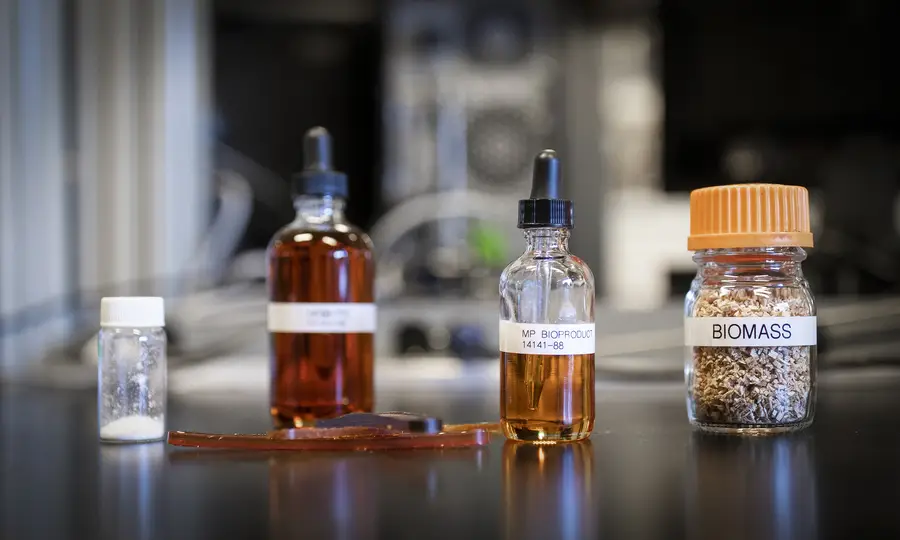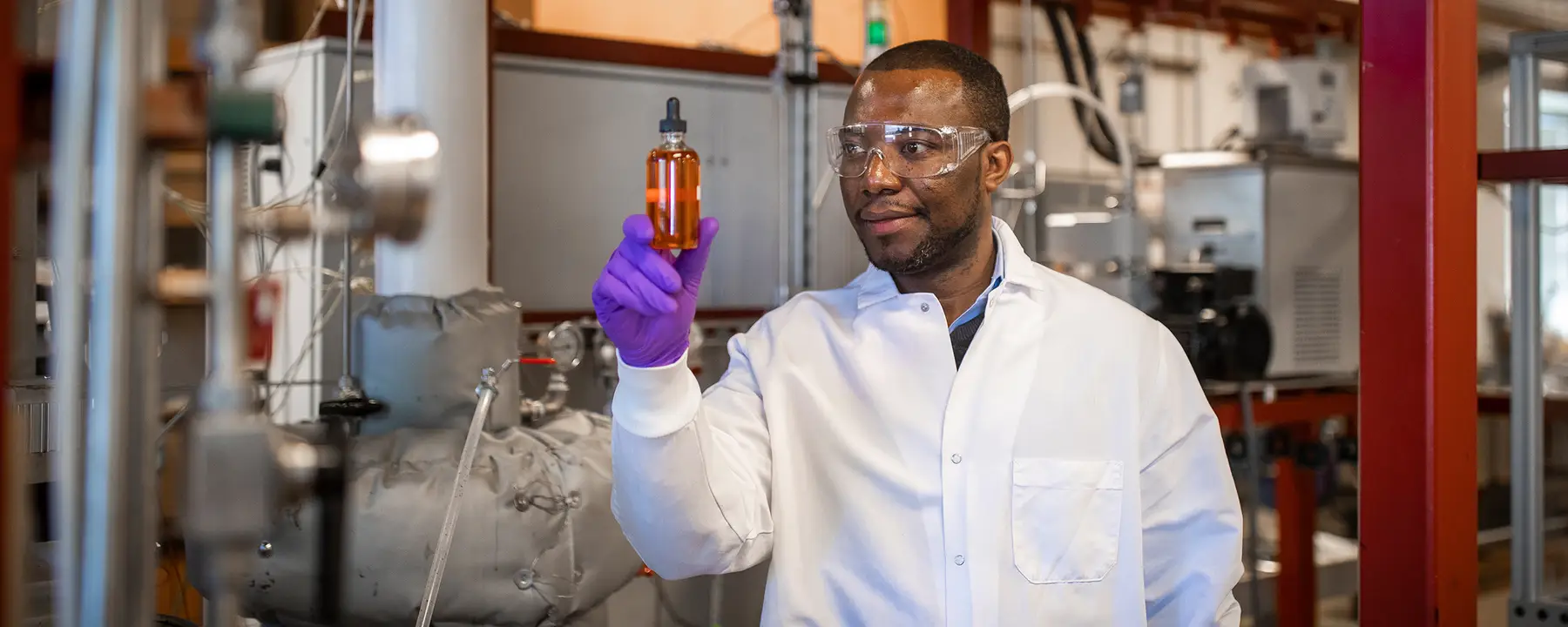Reducing the need for petroleum by turning biomass into high-value bioproducts and biofuels
Objective
Make biofuel production more economically attractive by turning biomass into both fuel and high-value products.
Approach
Using catalytic fast pyrolysis technology, we break biomass down into gas, liquid, and solid (biochar) products. This creates a liquid called bio-crude, which is further refined into biofuels and oxygenated chemicals.
Impact
Biomass can be a new source of synthetic vanilla, flame retardants, and anti-microbial agents. Compared to current methods of deriving these chemicals from petroleum, our technology is less expensive, more sustainable, and involves fewer chemical synthetic steps.
When we think of petroleum products, we tend to think mainly of gasoline and diesel for transportation, home heating, or electricity production. We often don’t realize that an astonishing array of other products, including plastics and flavorings, also come from the oil that we extract from deep under the surface of the earth. Meanwhile, the economic and environmental cost of extracting oil is becoming less and less sustainable.
What if we had an Alternate Source?
Since 2016, RTI’s biofuels experts have been working with the U.S. Department of Energy on new ways to produce these important chemicals from biomass instead of petroleum. Starting with any type of woody plant material, including material that would otherwise go to waste, we are able to produce a variety of oxygenated chemicals, including methoxyphenols. Sources of woody plant material include residues from forest (e.g., bark and thinning) and agricultural (e.g., corn stover and wheat straw) activities. These chemicals can be used as flavorings, fragrances, essential oils, pharmaceuticals, detergents, flame retardants, and polymers.
Nature has what we need,” said Ofei Mante, an RTI engineer and the principal investigator of MegaBIO. “We just need to find a way to develop bio-products sustainably and economically.”
Our MegaBIO project can improve the economic viability of developing biorefineries by co-producing fuels and higher profit margin chemicals. Currently, in petroleum refineries, about 75 percent of each barrel of oil becomes fuel, while 16 percent is used for petrochemicals. Yet these two product streams create the same total value in the supply chain. This exemplifies that co-production of bioproducts, such as high-value chemicals with biofuels, could potentially lead to economically viable biomass-to-liquid fuel technologies and afford a higher return on investment for the private sector. In fact, our economic analysis shows that producing methoxyphenols along with biofuels could reduce the selling price of biofuels by at least 30 percent.
How Does it Work?
Our researchers have developed a catalytic fast pyrolysis process that produces a liquid bio-crude intermediate from biomass that contains high-value oxygenated chemicals. With our technology, we can make a bio-crude that contains 5 to 15 weight percent of functionalized phenolic compounds with a multitude of uses. A separation technology has been developed to recover these phenolics from the bio-crude prior to refining it to biofuels. Using loblolly pine wood as our main source of biomass, we have recovered methoxyphenol with greater than 90 percent purity and 75 percent recovery efficiency, with no residual losses.

We have scaled up our separation system, which is currently capable of processing seven gallons of biocrude per day. Working with our partners, Arkema and AECOM, we are improving our process and identifying more potential uses for the recovered methoxyphenol bioproduct. Currently, we have demonstrated their use as chemical building blocks for the synthesis of vanillin and flame retardants. In addition to these and many other known uses, we have found that the methoxyphenol byproducts we recovered have great potential as antimicrobial ingredients for paints and coatings. We are also seeking additional partners with an interest in non-petroleum sources of methoxyphenols and other marketable oxygenated chemicals.
Potential for the Planet
Our work in biomass conversion holds great potential to provide sustainable options that utilize renewable resources to reduce greenhouse gas emissions and mitigate the effects of global climate change. Renewable resources are an alternative to the familiar pattern that leads from oil extraction, to the production of fuels, energy, chemicals and plastics, to the generation of massive amounts of plastic waste and greenhouse gas emissions. Instead of this linear pattern of make, use, and dispose, the world should strive toward a circular process of make, use, re-use, recycle, and re-make, in which nothing goes to waste and precious natural resources are conserved. Turning to sustainably sourced biomass, forest residues, agricultural leftovers, and municipal solid waste as a source of fuel, plastics, and chemicals helps save the costs of digging up oil and reducing greenhouse gases while steering us toward renewable and recyclable resources.
There is no single answer to the many threats facing planet Earth. Part of the solution lies in technology—finding new, sustainable ways to produce energy and important materials. Biomass conversion, a renewable source of biofuels and high-value chemicals, is one of the technologies that will help us advance in this direction.
- U.S. Department of Energy, Bioenergy Technologies Office (DOE-BETO)

